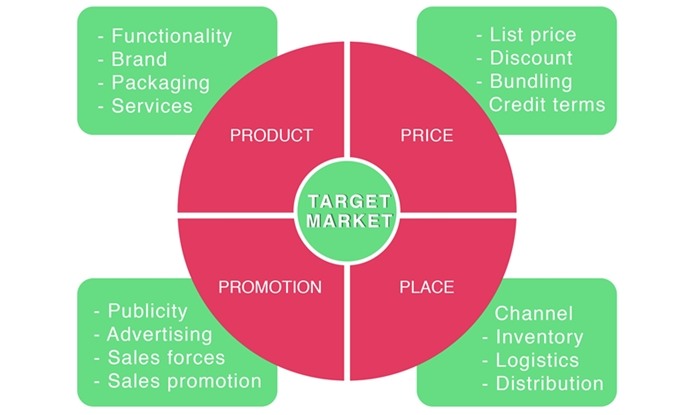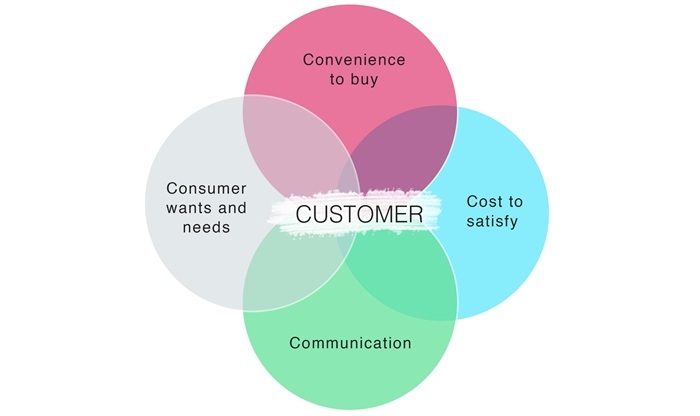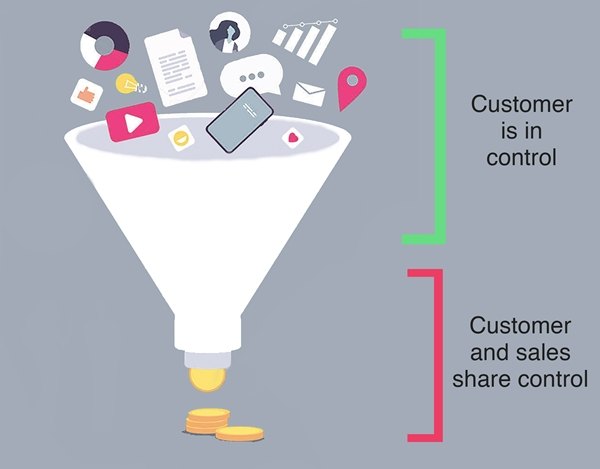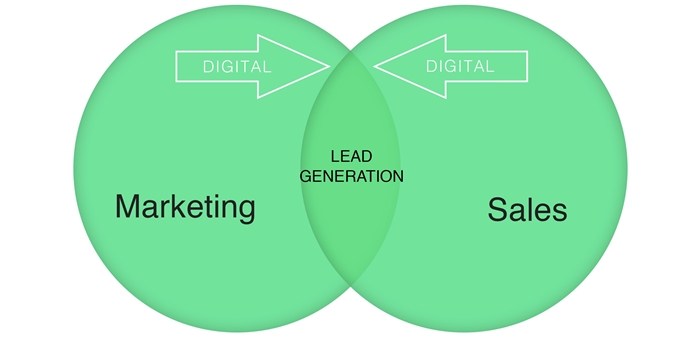Are the 4Ps still important? Has the emergence of customer-centricity supplanted them? How has digital changed the marketing and sales funnel? What's the new relationship between Marketing and Sales?
This article explores the rise of "digital" in marketing—its origins and its impacts on traditional sales and marketing strategy.
Are The 4Ps of Marketing Still Important?
The 4Ps model—product, price, promotion, and place—was the marketing strategy of choice for much of the 20th Century. It made complete sense for marketers primarily tasked with reaching target audiences without any direct communications channel, nor ones that afforded meaningful feedback. Print media, television, and radio were the dominant marketing channel groups from which 20th century buyers would gain knowledge of products, services, news, events, and trends.
Advertisers would match their assumptions about their customer groups to relevant channels: homeware products marketed through daytime television, sporting goods through sports magazines, and toys during Saturday morning children's TV sessions.
The following diagram illustrates how the 4Ps model worked: To reach your target marketing, simply set an appropriate "marketing mix" of product, price, promotion, and place.

The Emergence of Customer-Centricity
In 1990, Bob Lauterborn wrote an article in Advertising Age, arguing that the 4Ps were dead and modern marketers needed to address actual issues.
He was right: Developed markets were becoming increasingly competitive, customers were becoming increasingly knowledgeable and annoyingly choosy, less likely to positively react to anything that was pushed their way.
Brands and corporations began to realize that incorporating the customer more sincerely within their services and product development was a crucial part of developing a business that delivered viability for the medium and longer terms.
Instead of the 4Ps, the 4Cs model came to better represent marketing strategy. As the model indicates, customers are now at the heart of marketing communications, which is oriented around their needs, their buying habits, the end result they are actually seeking from the "total product offer," and how much they are willing to pay for it.

Digital Is Changing the Funnel
The diagram below illustrates a marketing funnel, which describes the flow of customers into your organization. It refers to customers' "journey" from being "suspects" (they are potential customers who are unaware of your organization and with whom you have no present connection), through to "prospects" (they have now become aware of your products) to sales leads and eventually into customers.

The diagram shows that the customer now controls the journey at the top of the funnel. In most industries, potential customers are able to perform extensive research independently of suppliers, largely through Internet research, and thus are in control over their buying journey.
The Modern Customer Journey
Just how much the customer journey has changed over the last 15+ years is still not fully understood or appreciated by the vast majority of us (suppliers and customers alike).
Consider, for example, the customer journeys of yesteryear's holidaymaker, gamer, and gambler:
- Short-listing, comparing, and buying a holiday was in recent times an exercise involving several trips to the local travel agent.
- Buying the latest video games, until recently, involved befriending the specialist in your local computer games store.
- And gambling has quickly moved into a fiercely competitive online battle among betting brands that seek to entice gamblers who hunt the Web for the best combination of odds and perks.
Those and 99% of other customer journeys have been irrevocably changed by the Internet.
Those examples also allude to changes in the delivery and sales channels involved—i.e., how the customer purchases the product. Holidays, gambling, and games have been particularly hot sectors for e-commerce because they lend themselves particularly well to online transaction. Which is most certainly the reason those industry sectors have been among the first to be transformed by the Internet.
However, the wider point is that the fundamental methodology the majority of online users are following to conduct their research for every other product in the world has fundamentally changed, and is continuing to change at a rapid pace.
And the direction of travel is clear: Customers have more control over their product research phases. It is therefore increasingly important that suppliers and brands understand how to respond.
The concept of customers' managing the research and comparison phases of their buying journey is perfectly well accepted now; however, when brands or suppliers honestly ask themselves the question, only a minority can say they have fully re-engineered their "top of the funnel" marketing efforts to reflect this new (and continually evolving) reality.
Marketing vs. Sales
Traditionally, marketing people have run away from having to be responsible for sales. After all, how can we be expected to create valuable brand experiences for customers if we are constantly having to worry about ROI?
Exasperated CEOs and CFOs shout back: Shareholders need us to maximize profits—tell us which half of this advertising budget is working so we can cut the other!
In the real world, the truth is that both have a point: Human creativity has enduring value (even when measured by the commercial yardstick of ROI), but digital has driven Sales and Marketing so close that in many industries they are now parts of an indivisible whole (again, just 15 years ago this idea would have been considered blasphemous in some sectors of the economy).
Marketers Are Sales Lead Generators
As digital pushes the influence of the customer further and further down the funnel, so the convergence of sales and marketing has continued.

They meet at the point of lead generation, and that is the ultimate KPI for many marketing functions today. In e-commerce businesses and increasing number of others, revenue is the direct objective. Lead generation and sales conversions presuppose the brand awareness and lead generation activities have also been optimized, and very often that activity is far less easy to measure.
In this regard, the role of creative, innovative brand awareness marketing (and its impact on the bottom line) is alive and well.




